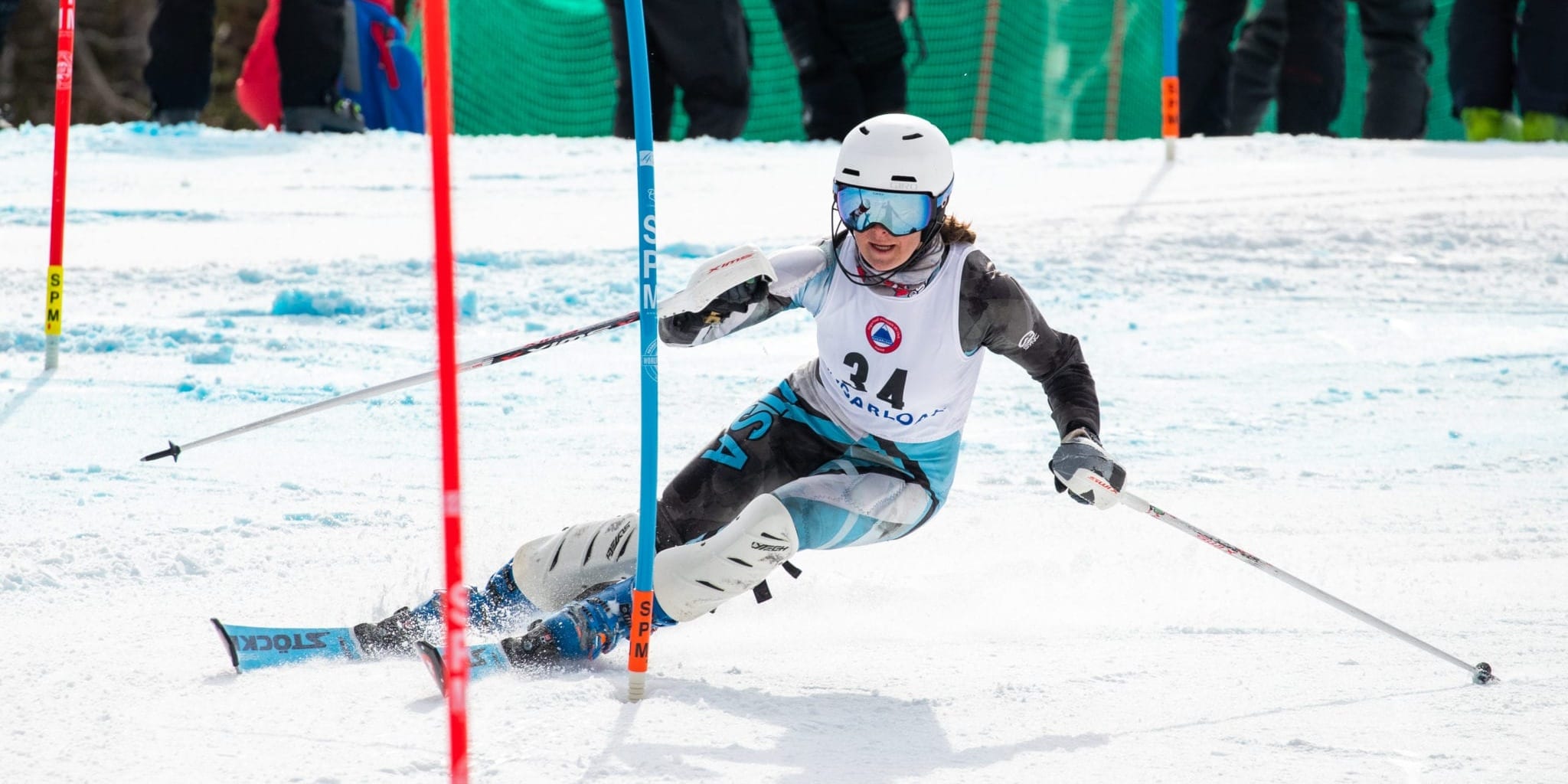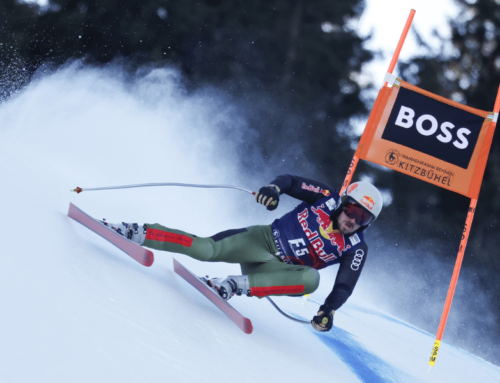Web special: Point-Counterpoint on the Lutsen Spring Series
Web special: Point-Counterpoint on the Lutsen Spring Series{mosimage}In the six years since its inception, the Lutsen, Minn., Spring Series has been a lightning rod for criticism, and praise. Many athletes and coaches love the event, and many others feel it’s an unfair manipulation of the International Ski Federation (FIS) point system. In this Ski Racing web special Point-Counterpoint, we offer two views of the event.
POINT: Sure, there are issues, but Lutsen’s about more than points
By Bill McCollom
We’ve seen the Lutsen Spring Series, held annually in northern Minnesota, inspire a great deal of passion over its six-year history. Every year we hear heart-warming stories of U.S. Ski Team athletes inspecting courses with local racers, hanging out together at ice cream socials, and putting on inspirational displays of speed and finesse in front of an appreciative audience. Yet these stories are countered by charges of debauchery, sandbagging and eye-catching financial inducements.
Team Gilboa in Hopkins, Minn. has been the organizing entity for the event, and the team’s former program director, Neal Atkinson, has been race coordinator since its inception in 1998. His goals were certainly pure at the onset of the series. “We wanted to give the kids, who will most likely never race a NorAm, a chance to ski with the National Team,” said Atkinson. “It has served as a marketing tool for the entire sport. This race has had nothing to do with points from the get-go.”
Many coaches laugh at this last contention, and several have called us to say so over the past few weeks. They question whether the points earned at these races make an absolute mockery of the point system, and cast doubt on the inherent fairness of the sport.
Said Dave Galusha, director of the Park City Ski Team, “If you create a six-point penalty, pay athletes to come and race on a short easy hill, the result is a point-skewing of the entire nation with ramifications on every selection process. And it’s sending the wrong message.”
John Leffler, head coach of the Quantum Sports Club in Breckenridge, Colo. equated the FIS point system to the gold standard: “The point system has to recognize fair valuation. If you can go somewhere and buy points, what does that say?”
Yes, contrary to Atkinson’s statement, the Lutsen races have become all too much about points. But is this reason to throw out the results or ban future spring series races at Lutsen? Paying athletes to support a race series has become common practice in all the USSA divisions. And as for the skewing of points, Atkinson admitted that this year’s snow conditions produced a wax race, but as for any underhanded manipulation, Atkinson said, “You won’t see any costumes, racing in warm-ups, on-course 360’s — they’re here to race.”
Bob Calderwood, the TD for the women’s GS races, where most of the point bonanzas have occurred, said, “I scored these races because I saw no reason not to. I’ve heard stories of manipulation for so long, I was looking for it, but no, no one’s holding back and the race course meets all the parameters for homologation.”
Cutting to the core of the issue, the only thing different about Lutsen and any other spring races is the ease of the GS hill, which for a few racers can lead to substantial point reductions, including one instance of a racer reducing her point profile by 30 points in two races. She should be rewarded for her gliding skills, but she will have difficulty skiing to those points on most venues, which certainly is not a healthy situation, as articulated by the coaches we quoted. That said, the point system has absorbed similar inequities in the past with no long-term negative consequences, and there are just too many good things happening at Lutsen to categorically ban the races.
The folks at Lutsen have created a successful series that inspires interest in the sport in a geographic area with enormous potential for growth, and to their credit the series has become one of the more popular races for athletes, and not just because of the potential to score points.
We certainly don’t advocate racing on the easiest hills in every division for the annual spring races for the sole intent of producing cheap points. That’s akin to throwing all sound development philosophy out the window. As it happens, Lutsen is the only FIS approved GS hill in the Midwest. And we’d hate to see bidding wars erupt for the services of the lowest point holders.
There are measures USSA and the divisions can take to address these issues. First, USSA and the National Alpine Sport Committee should carefully review all FIS racing trails and impose restrictions on those trails that have been granted exemptions or waivers. But if a venue meets full FIS criteria, so be it. We also think there should be a ban on appearance money, in favor of prize money. This would reduce or eliminate questions about impropriety or point manipulation. Finally, the season-ending series in the various divisions should be staggered so they don’t conflict with one another, and all athletes should be encouraged to support their respective divisions.
Despite the warts, in many ways Lutsen has created an attractive model. Let’s offer options for our athletes, build on the good points that Lutsen offers and avoid the knee-jerk reaction of throwing the baby out with the bath water.
Bill McCollom is managing editor of Ski Racing and a former competitor, coach and ski academy headmaster.
COUNTER-POINT: A clear history of point giveaways
By Randy Graves
Now in its sixth year, the Lutsen Spring Series has a track record, for many of us in the business of developing and managing young alpine ski racers, that represents a clear history of point giveaways as well as a forum for blatant and egregious disregard for the principles of work ethic and fair play. What is often misrepresented under the guise of “ice cream socials” and purported displays of athletic altruism is, in reality, a six-day, all-expense paid trip for select national team members to Lutsen, Minn., where year after year non-national-team racers ante up for the chance to collect single-digit penalties on a hill whose FIS GS homologation is suspect, to say the least.
For the sake of discussion and in the interest of objectivity, let’s consider the following points as raised by John Leffler, head coach of the Quantum Sports Club in Breckenridge, Colo.:
–FIS points are the “gold standard” of alpine ski racing. The points are the property of the FIS. They are, in effect, being sold for local and divisional interests.
— The concept of “reasonable” value is the very basis of our sport. The entire structure, the rules and regulations that govern us, are designed to convey this value on all its participants. Without this basic value system we must rely on costly (and rare) head-to-head competition.
— Points are used to rank all athletes in the system and to convey a relative worth for each athlete. World rank, world age rank, national rank, national age rank are all used for (1) national, regional, and divisional team selections; (2) start rights, free lifts, entries, seeding, and manufacturer’s support; and (3) international quotas.
— If it were not for the perception of “easy points,” what would be the attraction to attend the Lutsen Series for anyone other than for Central athletes?
— The appropriate representatives from USST and USSA have been contacted over the past five years (in both formal and informal formats) requesting that the Lutsen environment be addressed at all levels. There have been requests to both de-certify the GS and to pull the sanction.
— There is no justification for selling out our sport.
During 23 years of involvement in development, I have believed that alpine ski racing can be seen as a metaphor for life. I also believe in the principles of fair play and hard work. I like the fact that alpine ski raci
ng is not a judged event but an event where athleticism is judged by the accuracy of a timepiece.
I believe that planning a long term program of development for an athlete in this sport includes a race season that lasts from November until April, not just from April 1 until April 6. I have enormous respect for our national team athletes — not only for their years of physical training and dedication but also for the years of financial struggle as well. In fact, I do not decry the use of performance or appearance fees; a long standing practice in track and field events.
But finally, let’s put this whole issue up for an open, honest and objective discussion for the sake of developing the sport of alpine ski racing in this country.
Longtime coach Randy Graves is a teacher and women’s ski coach at Green Mountain Valley School in Waitsfield, Vt.
























